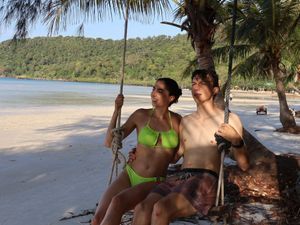
Asia quite literally takes us to the other side of the world, since Canada is home. This trip has just begun, and we plan to explore this part of the globe over the next 4-5 months. Here we will document our current plan and update as we go along, as well as adding any tips and recommendations we learn.
Table of Contents
How Long to Stay
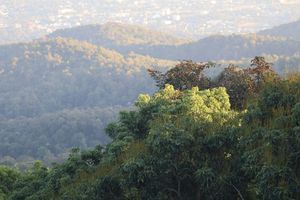
This one is hard to answer, Southeast Asia is so big and has so much to offer (plus we quickly visited Japan, which is another country we could have stayed in MUCH longer). We have chosen to travel about four to five months after much research on expenses, what do, and where to go. We plan to visit nine countries in Southeast Asia + Japan, staying about two weeks in each, some significantly less where we will only stay a couple days, to other where we will stay almost a month. All these were planned out via a spreadsheet, shared below.
Why add Japan? Well, it was in the area and Will was dying to visit. Plus, there were some pretty solid (and cheap) direct flights from YVR.
Visas
Most counties in this area require most travelers to apply for a visa, which can either be done at the border or online as an e-visa. If you apply for an e-visa, it is often cheaper, but you must make sure the border crossing you are entering from accepts them.
This table gives some basic information (as of 2025) on visas and e-visas for Canadian travel. It is always best to check with the Government of Canada for travel advice and advisories, or if you are American, check with the Department of State.
| Country | Visa? | E-Visa? | Issued on Arrival | Cost (CAD) |
|---|---|---|---|---|
| Brunei | ❌ | ❌ | ✔ | $0 |
| Cambodia | ✔ | ✔ | ❌ | $40 |
| India | ✔ | ✔ | ❌ | $140 |
| Indonesia | ✔ | ❌ | ✔ | $45 |
| Japan | ❌ | ❌ | ✔ | $0 |
| Laos | ✔ | ✔ | ❌ | $68 |
| Malaysia | ❌ | ❌ | ✔ | $0 |
| Maldives | ❌ | ❌ | ✔ | $0 |
| Nepal | ✔ | ❌ | ✔ | $70 |
| Philippines | ✔ | ❌ | ✔ | $94 |
| Singapore | ❌ | ❌ | ✔ | $0 |
| Sri Lanka | ✔ | ❌ | ✔ | $68 |
| Thailand | ❌ | ❌ | ✔ | $0 |
| Timor-Leste | ✔ | ❌ | ✔ | $40 |
| Vietnam | ✔ | ✔ | ❌ | $60 |
Check out our visa spreadsheet on Google Sheets.
Vaccines
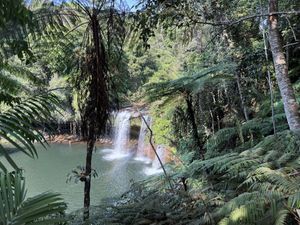
Southeast Asia is a very tropical climate, and with that comes disease. It is best to be prepared JUST IN CASE. We visited a travel clinic before we left to get all the necessary shots and boosters to stay safe. We also made sure all routine vaccinations were up to date.
⚠ Note: We are NOT doctors in any way shape or form, so take this list as a guide.
SEA Vaccines
- Hepatitis A
- Hepatitis B
- Cholera
- Japanese Encephalitis
- Polio (booster for Canadians over age 18)
- Typhoid
- Malaria Pills
- Rabies (travel clinic suggested, but due to the high cost ($700 CAD) we decided to risk it)
Routine Vaccinations
You should already have these as part of routine vaccination schedules in most Western countries.
- Chicken Pox
- MMR
- HPV
- Tetanus
Budget
Traveling in this area should be relatively affordable, as long as you spend money wisely (Japan and probably Singapore are the exception). Accommodation and food will take up a large portion of our budget, so here are some tips to save money:
- Hostels and guesthouses over hotels - try Booking.com
- Street food = cheap, sit down restaurant = expensive
- Grab breakfast from grocery stores and pack lunch + snacks
- DIY excursions: Save money and gain freedom
- Walk whenever possible
- Be picky with what ‘tourist attractions’ you pay to visit - some are totally worth it, others are less so
- Pack light - nothing sucks more than having to pay big bucks for extra baggage fees
We once again created a spreadsheet (you can see it on Google Sheets)with our estimated expenses per day for two people, and we are tracking how much money we have and spend via the sheets. We are trying our best to stick to our ‘rules’ but sometimes it is worth it to splurge here and there.
What to Bring
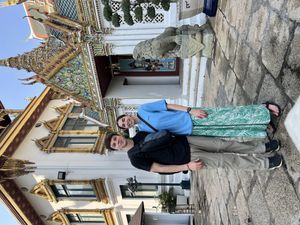
When traveling for long periods, you have to master the art of bringing just the right amount of clothes. For some it is easier than for others. This list is more so for people who are more into hiking/outdoorsy stuff. If that’s not really your thing, you might not need a pair of runners or zip-off pants and can likely get away with some good walking shoes and leggings/shorts.
Also, keep in mind temples and many other historical sites have a dress code and it is important to have something to cover both knees and shoulders – both for men and women.
Women
- 2x athletic shirts
- 5x tank tops
- 2x shorts
- 1x jean shorts
- 2x linen pants
- 1x zip off pants
- 2-4x bikini bathing suits
- 1x one-piece bathing suit
- 1x leggings
- 3-5x bras
- 1-2 maxi dress(es)
- 1-2 maxi skirt(s)
Men
- 6x shirts
- 1-2 linen shirt(s)
- 4x shorts
- 1-2 x zip off pant(s)
- 1x light sweatpants
- 1x light hoodie
- 2-3x bathing suit
Essentials
- Underwear
- Bras
- 5x socks
- Flip-flops
- Runners
- Sandals
- Toiletries
- Sunscreen
- Mosquito repellent
- Shaver
- Day pack (small backpack)
- Sarong (or another cover)
Tech + Misc
- Laptop
- Camera/GoPro
- Phone (duh)
- Watch
- eReader
- Chargers
- Earbuds (wired and wireless)
- Adapter
- Microfiber towel
- Water bottle with filter
- Passport and Visas
- Cash, credit, and debit cards
⚠ Note: It’s better to under-pack than over because you will likely end up buying a few things as you travel.
Data
It is important to stay connected with family and friends while traveling – for safety reasons. But that is not the only reason you should consider having data. Looking up directions, additional things to do, where to eat, are all conveniences that come with having a data plan. Additionally, it can be quite useful to have for emergencies.
There are two options for affordable data in Asia: a physical SIM vs an e-SIM.
Physical SIMs work on all devices. Be sure that your provider at home did not lock your phone, as that would be quite unfortunate. They are usually cheaper than e-SIMs if you buy them from the right place. Typically, airports are not the cheapest and you have to make your way into your destination to get the best deal.
e-SIMs are extremely convenient, you are able to purchase one before arriving to a new country and activate it once you arrive. There are usually a variety of plans to choose from to best fit your travel needs. Be sure to check that your phone is compatible with them, as some older phones will not work. We recommend Airalo, and you can use our code WILLIA1097 to get a sweet discount!
How to get around
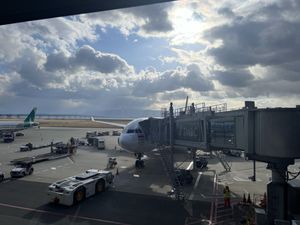
Each county has their own transportation system, all with varying degrees of efficiency. It is important to make sure that you can get to your new destination from where you are staying before, as not all cities have good connections.
- Japan is obviously well known for their public transportation. High speed bullet trains, local trains, metro and buses leave everything well connected and easy to access via public transport. Most can be paid using the Suica or Passamo card.
- Thailand has one train line from Bangkok to Chiang Mai, everything else must be reached by bus. Many can be booked online via 12Go.asia or BookMeBus in advance. The local buses can be paid onboard the bus with cash. In order to reach tourist attractions outside the city, you can usually take a songthaew or tuktuk. If not, renting a scooter is a great option.
- Laos also has one train line, funded by China, it runs from the North to South of Laos. The main cities of Luang Prabang, Vang Vieng, and Vientiane can be reached via this line. Everything else can be reached by bus. Be aware that many popular destinations in Laos are VERY far from each other and take over 8h.
- Cambodia has one train line, which we took from Phnom Penh to Sihanoukville, which took 7h at a very slow pace. Traveling anywhere else requires the use of minivans or busses. Many of these can be booked online via 12Go.asia or BookMeBus in advance.
- Vietnam: we’re still traveling here
- Malaysia: we’re still traveling here
- Singapore: we’re still traveling here
- Indonesia: we’re still traveling here
- Philippines: we’re still traveling here
- Timor-Leste: we’re still traveling here
- Brunei: we’re still traveling here
Quick Itinerary
Our current plan was devised with much research, we are also very aware that it is likely to change. We have gone through multiple revisions as we factor in the rainy seasons, burning seasons, and peak seasons.
You can see the entire one (with ✨interactive✨ updates) on Google Sheets!
| Country | Number of Days | ~Cost/Day | Shoulder Months | Peak Months | Wet Season |
|---|---|---|---|---|---|
| Japan | 8 | $250 | Jan + Sept | March-May | June-July |
| Thailand (North) | 20 | $70 | March-April | Dec-Feb | May-Oct |
| Laos | 14 | $40 | Jan, May-July | Nov-Jan, April | May-Sept |
| Cambodia | 10 | $50 | April-June | Jan-March | May-Oct |
| Vietnam | 24 | $60 | April-June | July-Aug, Jan | Aug-Sept |
| Malaysia | 14 | $70 | March-Nov | Dec-Feb | East: Nov-March, West: May-Sept |
| Singapore | 4 | $150 | Feb-May | June-July, Jan | Dec-Jan |
| Indonesia | 25 | $50 | March-June | July-Aug | Jan-Feb |
| Timor-Leste | 7 | $60 | April-May | May-Nov | Dec-April |
| Brunei | 3 | $90 | Jan-May | June-Sept | Sept-Dec |
| Philippines | 22 | $50 | May | Nov-April, Jan | Jun-Sept |
⚠ Note: The cost per day is for two people, and in Canadian Dollars (CAD).